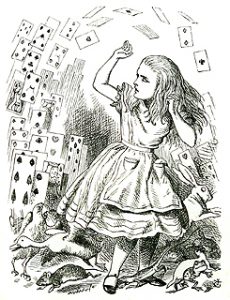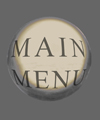Alexander Harry Curtis is an artist and philosopher. Originally from Britain he has been living in Austria since his mid-twenties. After many years in Vienna, he moved to the small town of Stein on the northern banks of the River Danube where he now lives in an old house below the crumbling remains of the town’s western defenses.
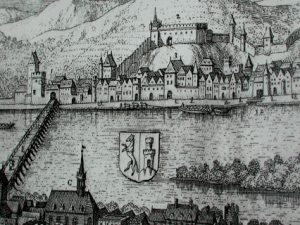
As a child growing up in Kent, he was puzzled as to why grown-ups continually talked about money as if they were only interested in the worth of things as opposed to the pleasure and enjoyment they offered. Although at school he did „A-Levels“ in maths, physics and chemistry, it was in the school library that he discovered art and resolved to become an artist.
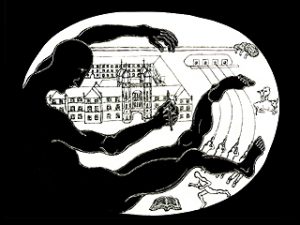
Disjointed memories of school
After spending a year making cheese, he did two years at Edinburgh College of Art, specializing in sculpture during the second year. With respect to the questions of where we come from and whither we go, he found living in a society that offered no real answers disconcerting. Taking the bull by the horns he did a course in philosophy at the University of Edinburgh followed by a second year studying on his own. Then as now, he was particularly interested in the philosophy of science and mathematics and how the phenomenon of mind is to be accounted for in a materialist explanation of the world.

Realising that a life in academia was not for him and having in any case found the answers to the questions that he had been asking, he decided to resume his artistic activities. Moving to Vienna, he discovered the medium of film and finding the art world in any case repellent, made a number of short films. In a series of whimsical, poetic works he intuitively anticipated geometrical and mathematical themes to which, thirty years later, he would return to.
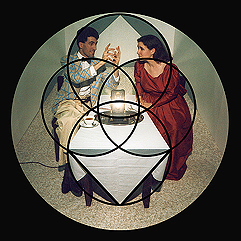
Making and playing a role in a film in which the relations between East and West were a major theme, he began to suspect that inherent to capitalism, there were hidden mechanisms at work that were inherently exploitative and which, independent of the machinations of the oil and mineral extraction industries, were the ultimate source of the world’s problems.
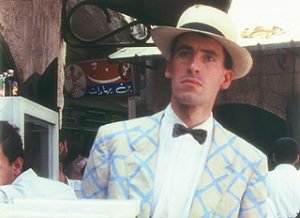
Nevertheless lacking the instruments to make the necessary analyses, it was not until the appearance of The End of Capitalism by Ulrike Herrmann and Capitalism/Marx in the Anthropocene by Kohei Saito that he found the diagnoses he had been looking for and confirmation that in the world at large, something at a deep, underlying level was seriously wrong.

The grandson of the archaeologist and art historian, Cecil Curle (neé Mowbray), Alexander Curtis‘ first encounter with the Venus of Willendorf was on the pages of a book in his grandmother’s library and as part of a DVD project, he designed a paper model of the world famous figurine from the Wachau. Departing from this he went on to design products for the museum shops of the Kunsthistorisches Museum in Vienna.
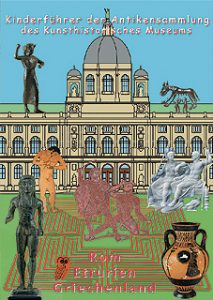
Despite his enthusiasm for film and the freedom offered by digital technology, when it became clear that the vapid pretension of the art world was infecting the world of film and was there to stay, he followed the cue given by the Venus of Willendorf and shifted his interests to the anthropology of human origins and the world of the Upper Palaeolithic. Avidly reading everything he could on the subject, he slowly began to feel his way back to sculpture and ways of making art that, far removed from modernist pretensions and false promises, had the connection to life and reality that he sought. Nevertheless it was only when he started learning Classical Greek that he found the confidence to follow the calling announced by the Venus of Willendorf paper model and return to sculpture.

A Portrait of the Artist as a Romantic, glazed clay, 2013
Learning Classical Greek not only helped him return to art, it also brought him back to the philosophical problems that he had addressed in his youth and whose answers, though formulated, he had never been written down or worked out in detail. Thus Order at the Heart of Chaos: Life and Consciousness in an Exploding Universe is a stop-check of scientific materialism. Aimed at the general reader interested in the big questions of life, it follows step by step – both scientifically and philosophically – the emergence of life and the beginnings of consciousness. The body/mind problem is found to be of central importance, as any answer we give dictates how we see ourselves and our place and role in the world. In this work, following the example given by Alain de Botton in his examinations of works of literature, Alexander Curtis asks whether an examination of the origins of life might have anything to tell us about how we should live our lives.
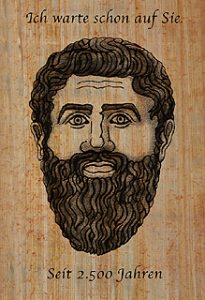
Philosophically, although Alexander Curtis‘ ultimate position is highly pragmatic and can be linked up to the tradition of American Pragmatism, its deeper roots are formed from his understanding of the work of Plato and the ultra pragmatism of Parmenides. Following Sir Karl Popper, Curtis sees these two philosophers as laying the foundations of what was to become the western scientific tradition and in Plato, his Life, Times and Philosophy, the approach taken by Popper to Plato is continued. Although Plato was at the cutting edge of scientific developments in the Greek world, since the end of the Renaissance, the humanities-based academic tradition that has appropriated for itself the task of disseminating his work has moved ever further away from science and what the scientific endeavour is and was about. Thus, although geometry lies at the heart of Plato’s philosophy, of his commentators, few have spent time with a ruler and compass in their hands. Rectifying this, Alexander Curtis‘ understanding of Plato is further informed through chaos theory and discussions with the musician and composer, Martin Gut.
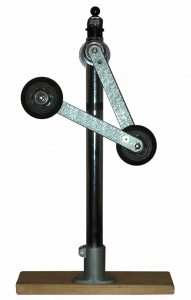
A double-jointed pendulum which, if imparted with a powerful flick of rotational energy, will flip chaotically round about and back and forth in a manner that is completely unpredictable.
In Order at the Heart of Chaos, chaos theory is introduced in detail along with an account of music in terms of chaos theory. Despite its abstract nature, it was chaos theory that alerted the author to the terrifying way in which eco-systems can be so easily tipped out of balance. With respect to the human food chain, this has the potential to result in calamities such as harvest failure across a whole continent. On five different occasions, nearly all life on Earth has been wiped out and evolution has been forced to start anew. The sixth mass extinction is however no longer a theoretical construct; it has already begun. Initiated by no one other than ourselves, like climate change, via the mechanisms of chaos theory, defaunation has the capacity to bring about the collapse of civilisation if nothing done to stop it. Both global warming and defaunation are driven by consumer culture and by the forces of childishly irresponsible, unbridled capitalism and in his book, What is at Stake, Philipp Blom analyses the mechanisms that lie behind consumer culture and why it has us so firmly in its grasp. Blom also identifies the historical roots that lead to the development of the capitalism that we know today and which in order to sustain itself and continue providing wealth, must continually grow. This forces us all to either actively or passively collaborate in the wanton exploitation of people and resources. Nevertheless Blom expresses faith that we can adapt and change and continuing where Blom signs off, Maja Göpel sketches out a much needed road map of how we are to arrive at a sustainable future. Setting out along this road is Bernhard Kaar, who together with his wife, runs a business in Dürnstein, the next village on the Danube up river from Stein.
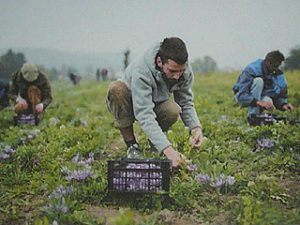
Alexander Curtis (left) helping with the saffron harvest in October
A biologist, Kaar’s life was changed by a story he heard that involved saffron and shows how the natural world has the capacity to mould and shape not only human culture but also individual lives. Learning from the plant that they farm and process, the Kaar family endeavours to implement principles that are not just about profit but which also include a genuine and sincere respect for the environment and the people – employees and customers – whose interest and enthusiasm it is, that ultimately make the business work.

A sundial by Alexander Curtis
With respect to contemporary art, Alexander Curtis agrees wholeheartedly with the utterly damming conclusions drawn by Hanno Rauterberg in his And that’s Art?! – A Quality Check. Unfortunately not available in English, the forces at work are nevertheless identified by Ben Lewis in his documentary film The Great Contemporary Art Bubble. By re-instating the viewer as an active agent in the appreciation of art, Rauterberg and Lewis see ways out of the dilemma. Yet this assumes that those who have assumed authority in saying what is and is not art will willingly renounce their self-appointed status, whilst those who have aided and abetted them over the years must admit that they are wrong and that a colossal U-turn is in order. As the art endorsed and sponsored by a society is always a reflection of the power structures in operation, it is obvious that there will be no self-questioning unless society itself changes. Nevertheless, leaving the hype and lies of the art world behind, all over the world there are genuine artists producing good work. One such is Dalia Blauensteiner who lives in Egelsse just to the North of Stein. Meanwhile, now seeing himself as an artist/philosopher, Alexander Curtis sees his art as a part of a general search, conducted on various levels of being, for a philosophy in which the living of life in a sustainable manner is implicit. These levels include history, philosophy, mathematics, geometry and sculpture and have resulted in a unique fusion of art history and history of mathematics which with respect to the Renaissance, has shed new light on the art and mathematics of Piero della Francesca.

Books always having been important, apart from writing books, over the years Alexander Curtis has made a number of artist’s books. Although more books are being printed now than ever before (both in terms of titles produced and in terms of volumes printed) there are nevertheless good grounds for fearing that the abilities of people to read deeply and to subject texts to critical analysis are being eroded through the overuse of digital technology. As pointed out by Maryanne Wolf and others, the ability to think and evaluate things critically is essential to democracy and the ability to see another person’s point of view. Largely uncommentated upon is the misuse of music and film which further erodes our capacity to think and feel for ourselves, so that as a whole, the misuse of digital technology is nothing less than a threat to the ideals that western civilisation has striven for.
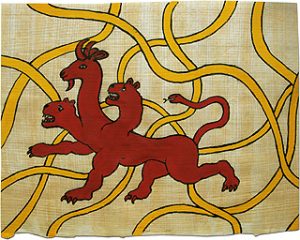
The Chimera, a page from the artist’s book, Bellerophontes and the Lighthouse at Patara, 2011
One of Alexander Curtis‘ great-great grandfathers was part owner and captain of a schooner. Although the ship and its history was intended as the subject for an exhibition that then fell through, the knowledge gained and the artefacts recovered from the Cornish mud are featured in a series of articles written for Austria Maritim, the magazine of the Friends of Historic Ships. See: https://www.fhsaustria.info, https://www.fhsaustria.info and https://www.fhsaustria.info.
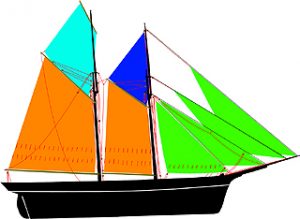
The story of the ship is the all-too familiar tale of rationalisation and the struggle to cut costs so as to remain in business and these issues form the departure point for Lisa Herzog who, investigating the historical basis of liberalism also addresses the role of work in the future. A major concern for Lisa Herzog is the de-bunking of the Homo oeconomicus myth – the notion that a human being is nothing more than a work module and that the sole point of life is to make money. Although patently absurd, this abstract and inhuman idea is the basis of neo-liberal thinking. Not only wide-spread, it is massively entrenched and institutionalised. As this enshrining is a feature of the European Union, the questions raised by Ulrike Guérot of how Europe should be and whose Europe it is, are highly relevant, particularly as the European Union not only has the capacity to offer solutions but in its current form is also part of the problem. In the face of such criticism it is tempting to think that the structures of the Union should be downsized, its power curbed and power restored to nation states. Yet Ulrike Guérot argues for a Europe of regions and demonstrates that historically, the nation state has a bad track record and a very blotched copy-book.

Europe turned through 90° and depicted as a queen
In the original formulations of liberalism, human interaction, in the form of trade are seen as being good in so far as no one else and no else’s property is harmed. Of a wider, more far-reaching conception of the good, nothing is said as it is assumed as self-evident that this is supplied by the Bible. In neo-liberalism, likewise no wider-ranging conception of the good is given. This however is because the notion of God and an ultimate good have been disbanded and it is simply assumed that the good is that which sells. Given the state of the world today, the falsity of this idea hardly needs discussion and yet it remains entrenched, with the law of supply and demand being seen as something that is not to be questioned. Drawing attention to the intrinsically expansive and exploitative nature of capitalism, Ulrike Herrmann argues that it cannot be adapted but only replaced. With reference to the British economy at the beginning of the Second World War, she argues that politics and politicians must once again return to a vision of what is needed in the world and dictate to industry and commerce what is to be manufactured and what is not. Although this goes against our current notions of freedom, when examined these notions turn out to whimsical, neo-liberal and consumerist and devoid of any notion of responsibility or of our having a debt to something that lies over and above us. Given form and articulated through capitalism, these infantile notions of freedom and the freedom to consume are that which is destroying the stability of our environment so that like Alice in Alice‘ Adventures in Wonderland it is high time for us to say „You’re nothing but a pack of cards!“
